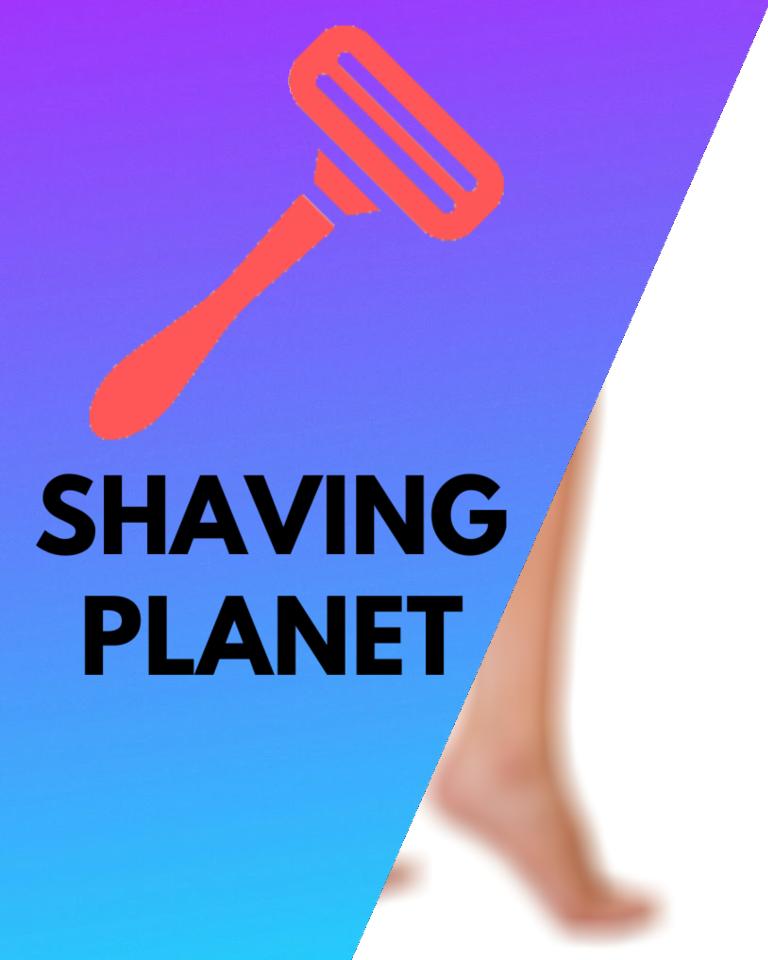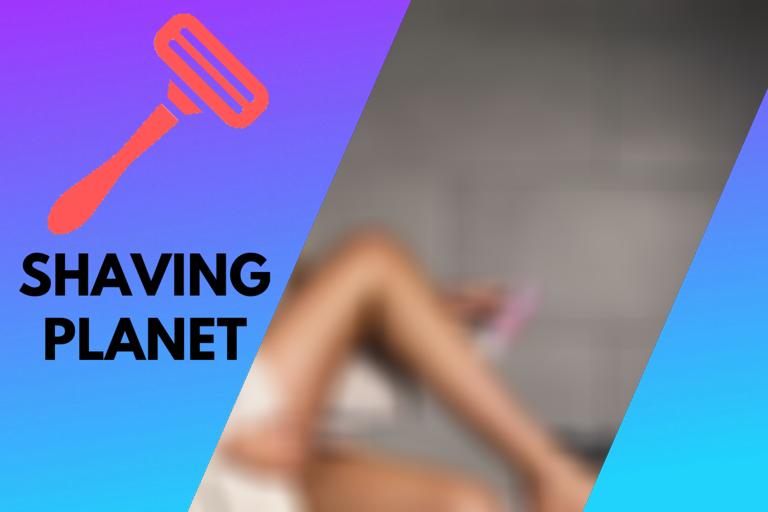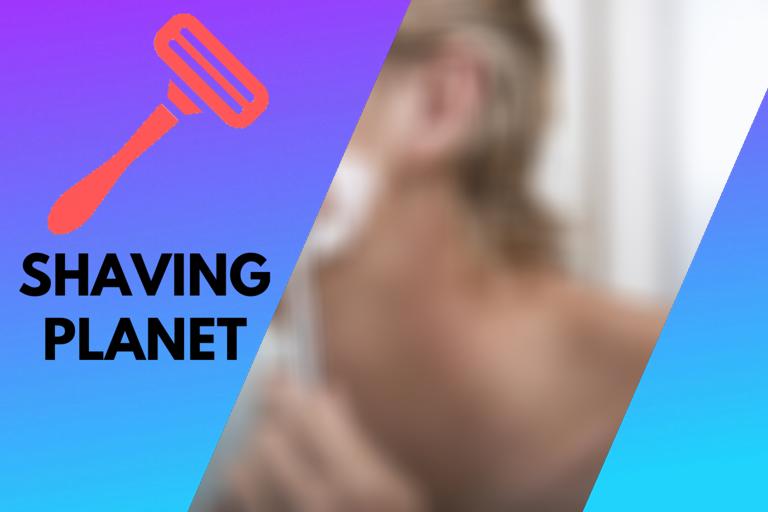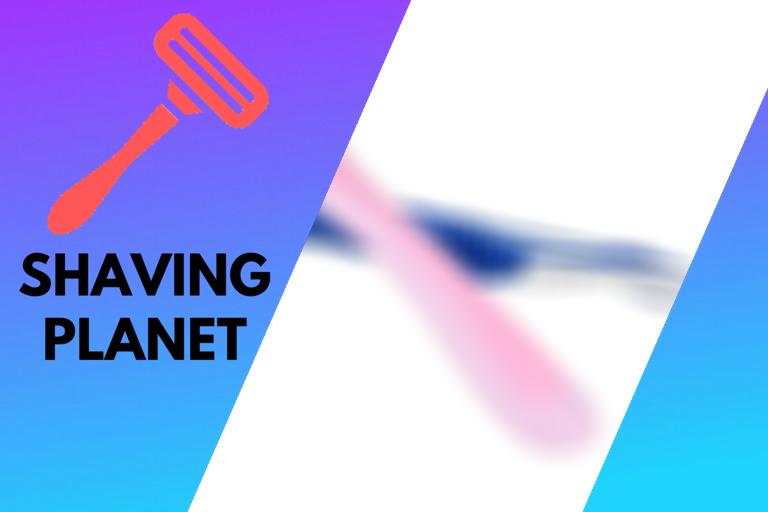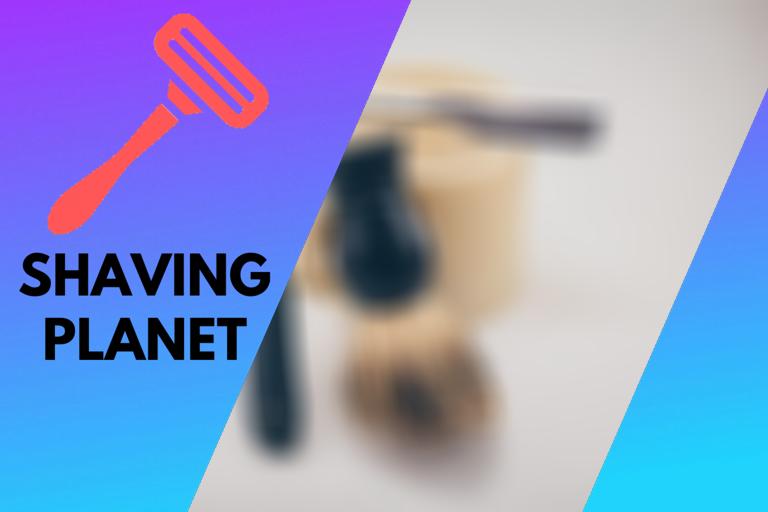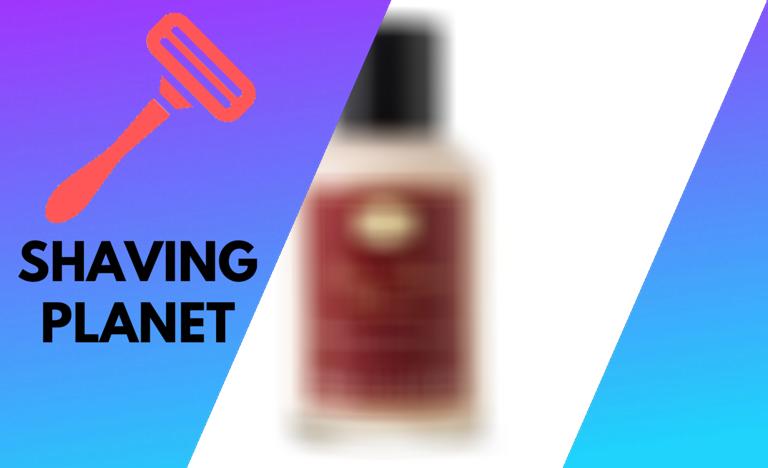Here’s why your skin gets oily after shaving
If you notice your face getting oily after a clean shave then you are not alone. Oily face is a common complaint among men who shave regularly and the greasiness usually gets worse during the warmer weather. Naturally, men produce more oil on their faces compared to women. But why does the oiliness become worse after a clean shave?
Here’s why your skin gets oily after shaving:
When you shave you wash away most of the oil from the face and this triggers the body to produce more oil. Another reason for excess oil production is that your skin gets oily due to oil secretion, a normal skin process. A man will notice this more than a woman.
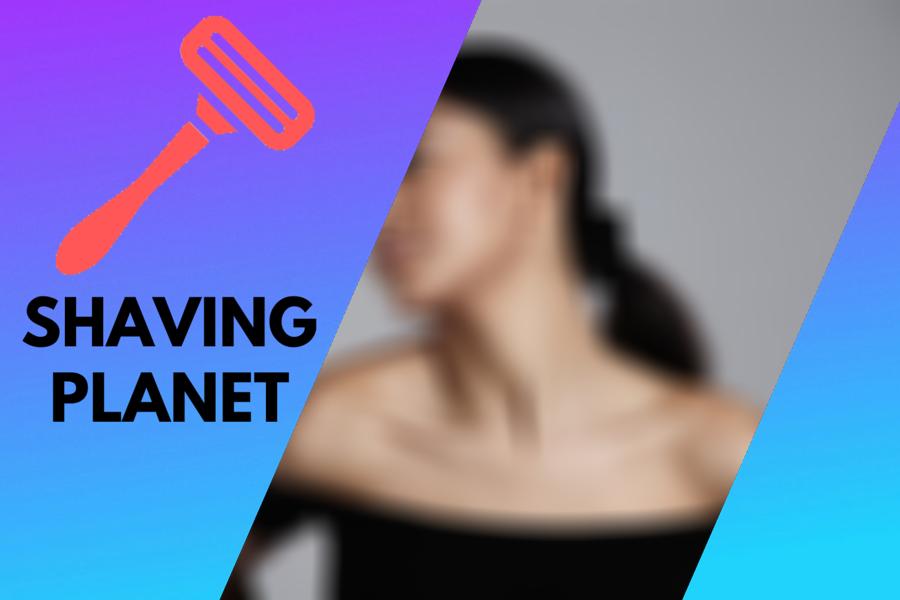
While oily skin is not abnormal, an overly oily face can lead to clogged pores because the oil doesn’t have anywhere to go once you have shaved the hair. Not to mention that the excess oil can make the skin seem shiny and attract dust and pollution quite easily especially during warmer weather. But there are some habits men have that might be causing their face to produce too much oil and in this article, we will discuss the causes of an oily face and how to prevent your face from being oily.
Contents
- What factors increase the chances of getting an oily face after shaving?
- How to prevent skin oiliness for men?
- Is having an oily face a bad thing?
- The Underlying Causes of Oily Skin
- • Utilizing The Hydration Ritual for Oily Skin
- • The Clearing Wash Solution for Congested Skin
- • The Importance of the Clearing Rescue Serum in Your Routine
- • The Role of Diet in Managing Oily Skin
- • Key Products for Oily Skin
- • Understanding Skincare: Focus on Oily Skin
- • Moisturizing: The Essential Post-Shave Step
- • The Cornerstone of Shaving: A Reliable Blade
- • HRT: A Consideration for Transgender Individuals
- • Waxing: A Shaving Alternative
- • Oily Skin: A Mixed Blessing
- • Technique: A Key to Preventing Irritation
- • Hormone Balance: Its Impact on Body Hair Growth
- • Experimenting with Skin-Formulated Shaving Creams or Soaps
- • Incorporating a Pre-Shave Routine
- • The Importance of a High-Quality Shaving Brush
- • Trialing Different Razor Blades
- • Exploring Oil-Controlling Aftershave Lotions
- • Experimenting with Various Brands and Formulations of Aftershave Products
- Understanding Oily Skin and Shaving
- • Importance of Correct Shaving Cream
- • Choosing Non-Comedogenic Products
- • Pre-Shaving Routine: Cleansing
- • Selecting the Best Cleansers for Oily Skin
- • Importance of Fresh Razor Blades
- • Benefits of Sharp Blades
- • Post-Shave Care: Moisturizing
- • The Role of Regular Moisturization
- • Developing a Skincare Routine
- • Final Thoughts
What factors increase the chances of getting an oily face after shaving?
Most of the time an oily skin is caused by some bad habits of men while other times it can be due to hormones that are produced inside the bodies of men. Below are some of the most common causes of oily skin in men who shave regularly:
● Using an Alcohol-based shaving product:
Using an aftershave with alcohol in it can dry your face out after you apply it which will cause the oil-producing glands in your face to produce more oil to keep the skin from drying and this can result in overly active sebaceous glands.
● Shaving too often:
Believe it or not, there is such a thing as shaving too much. If you are shaving every day it will cause you to irritate the surface of the skin as a new fresh layer of skin is exposed to irritants each day and it can also make your skin thinner, making it prone to damage resulting in oiliness.

● Inflammation of sebaceous glands due to close shaving:
If you like to get an extremely close shave it can result in inflammation of sebaceous glands and cause the gland to produce excess oil which can turn into a bump on the skin filled with excess sebum.
● Scrubbing your face too roughly after a shave:
Scrubbing your face too much can also leave the skin dry as all the oil is washed off from your face putting your sebaceous glands into overdrive to make up for the lost oil. This results in your face getting too oily right after you are done the shaving.
● Shaving can disturb the pH levels of your skin:
Your facial skin has a specific pH level which it maintains using a combination of amino acid, lactic acid, and fatty acid. Most shaving creams have a very high pH level that can be as high as 10 while the pH level of your face should be around 5.5 pH. So using shaving products with a high pH can damage the acid barrier that your skin naturally has causing it to get dry and produce more oil.
How to prevent skin oiliness for men?
Luckily overcoming an oily skin after a shave is not very difficult and here are some simple ways men can keep their skin oil-free:
● Stay away from high pH skin products:
When you go shopping for your shaving supplies and other skincare products try to go for products that are made from natural ingredients because they are easier on the skin and don’t have a high pH level like chemical-based products. Similarly, it is wise to go for face washes that contain natural antibacterial ingredients such as tree oil to clean your skin without overly drying it.
● Avoid washing your face too often:
Washing your face once in the morning and then in the evening is more than enough to keep it clean. Because if you wash your face too often you are stripping your face from its natural defense, that is, the oils it produces to form a protective layer. Since the skin needs these oils to stay protected, your face will keep producing more and more oils until you stop washing them away. So while it is important to keep the face clean, you should avoid overdoing it to stay oil-free.
● Avoid eating oily and processed foods:
Your diet plays an important role in your skin health. The more bad oils you are putting inside your body the more oil your skin will produce. So adding organic food items in your diet and getting rid of processed ones can reduce your skin’s oiliness significantly in a short period of time. Similarly adding more fruits and vegetables in your diet can help in balancing your skin’s pH and prevent skin irritation resulting in healthy oil-free skin.
● Use oil-absorbing paper to soak up excess oil:
You can keep your skin oil-free by keeping oil-absorbing rice paper handy and wipe off the excess oil gently whenever your face starts to feel too oily. Be careful not to wipe too hard because the idea is to only soak up excess oil and not dry up the skin from oil completely. Over time your skin’s oil production will drop to normal levels and you will no longer need rice paper.
● Keep your skin moisturized:
This is a no brainer! Your skin is producing excess oil because it thinks that your skin has dried out. So keeping your skin nice and hydrated is going to keep the oiliness at bay. Sometimes dehydration can also cause skin dryness so drinking plenty of water can do the trick and keep your face moisturized.
● Don’t touch your face too often:
It is tempting to touch your face to see if it is getting greasy or not if you have oily skin. But doing this can transfer oil from your hands to your face and make the skin even greasier. Not to mention that if your skin pores are already blocked from excess oil, touching your face without washing your hand can transfer bacteria which irritates the skin and this can cause a breakout.
● Use a face mask specifically designed for men:
As we mentioned earlier oily skin is often accompanied by clogged pores and other unwanted particles that your oily skin is bound to attract. Therefore using a facemask designed especially for the skin on men cannot only clear up any clogged pores but also get rid of excess oil without completely drying the skin off.
Is having an oily face a bad thing?
If you have an oily face then chances are you want to get rid of it as soon as possible but oily skin is not necessarily all bad and it certainly has its perks. Some benefits of having oily skin are as follows:
● Free moisturization for your skin:
Oils secreted by our face may annoy us but they keep our skin hydrated by forming a thin layer that locks in the moisture of our skin and prevents the moisture from evaporating and leaving the skin dry.
● Natural protection from the sun:
While it is still recommended to wear sunscreen when going out in the harsh sun, oily skin is better at protecting itself from the harmful rays of the sun compared to dry skin. Moreover using sunscreen on oily skin can increase the sun-blocking capabilities of sunscreen leaving our face more secure from the sun.
● Skin oil contains antioxidant abilities:
Studies have shown that oil secreted by our skin’s sebum glands contain antioxidant properties that protect our skin from oxidants and other harmful elements present around us. Basically, the oil produced by our skin acts as a defense mechanism and keeps our skin safe from attacks from dangerous free radicals.
● Keeps the skin looking younger:
If you have oily skin then you are less likely to develop wrinkles and fine lines on your face at an early age. The reason why oily skin ages better than dry skin is because sebum secreted by our skin helps keep the skin well lubricated and elastic and keeps away fine lines and wrinkles in the process.
The Underlying Causes of Oily Skin
Oily skin doesn’t just appear out of the blue. Multiple factors contribute to this skin condition. A significant cause is a hormonal imbalance; several stages of life, like adolescence and pregnancy, are often characterized by hormonal fluctuations, which may increase the skin’s oil production.
Poor diet is another contributor to oily skin. Consuming diets with excessive refined sugars or saturated fats may lead to an increase in oil production. Equally, the use of harsh skincare products can strip off the skin’s natural oils, causing the skin to overproduce oil in a counteractive process.
The consequences of overproducing oils can be pretty severe. You may notice enlarged pores, the usual culprit for blackheads and pimples. For more insights on the causes of oily skin, consult the American Academy of Dermatology.
• Utilizing The Hydration Ritual for Oily Skin
When dealing with oily skin, the Hydration Ritual can be a game-changer. This process calls for hydrating and soaking the skin regularly. If consistently carried out, it can help to regulate oil gland activity and enhance the skin’s texture.
• The Clearing Wash Solution for Congested Skin
The Clearing Wash is particularly advantageous for skin congestion, which is a common characteristic of oily skin. You can apply the Clearing Wash like a mask on affected areas to alleviate skin congestion.
In some cases, and until the congestion clears, it may not be necessary to moisturize. However, the application of moisturizers should be guided by personal skin experiences rather than a general rule of thumb.
• The Importance of the Clearing Rescue Serum in Your Routine
The Clearing Rescue Serum is another essential product to incorporate into your skincare routine. For optimal results, I would recommend applying the serum both in the morning and at night.
• The Role of Diet in Managing Oily Skin
Given the significant role of diet in managing oily skin, it is advisable to consult an expert for customized, balanced, and nutritious diet plans. They can recommend a diet that not only corrects oily skin but also promotes overall body health. Harvard Health Publication offers helpful guidelines on nutrition and skin care.
• Key Products for Oily Skin
Several specific products can work wonders for oily skin. Organic citrus oils, for instance, can notably cut down skin oiliness.
A liquid shaving lotion is another must-have if you want to condition and cleanse the skin. It’s helpful when shaving areas with oily skin as it ensures the skin is well maintained.
Next up on the list is an exfoliating product. I would recommend using a product with crushed almonds. It’s gentle on the skin and suitable for all skin types.
Finally, a post-shave product is equally important in calming and conditioning the skin after shaving.
All these products combined can significantly improve the condition of oily skin.
Maintaining a consistent skincare routine using the appropriate products, coupled with a healthy diet, is fundamental in getting a grip on your oily skin. Remember, the journey to improved skin health is a gradual process, demanding patience and consistency.
• Understanding Skincare: Focus on Oily Skin
The Importance of Cold Water Rinse
Expert skincare practices often emphasize the value of cold water rinsing after a shave. This process works wonders in closing the pores and helps significantly in preventing the production of excess oil. Scientific research from the U.S. National Library of Medicine underpins these facts. The Role of Gentle Cleansers
Using a gentle cleanser that is particularly crafted for oily skin has its perks. Such a product aids in removing the residual oil, dirt, and impurities leaving your skin fresh and oil-free.Toning for Oily Skin Health
The job of a good toner is to remove residue, tighten the pores and restore the skin’s natural pH balance. When choosing a toner for oily skin, opt for one that is alcohol-free. Moisturizing Oily Skin
Are you under the misconception that oily skin doesn’t require moisturizing? On the contrary, even oily skin needs hydration to maintain its health. The catch is to use an oil-free moisturizer that’s lightweight and doesn’t clog pores. Sun Protections for Oily Skin
Sun protection isn’t just for those with dry or combination skin. It is equally essential for oily skin. Investing in a broad-spectrum sunscreen with at least SPF 30 guarantees protection against UV rays. Effective Face Cleansing Habit
An effective routine for managing oily skin is cleansing twice a day, once in the morning and once in the evening. This helps keep excess oil and impurities at bay while promoting a healthy skin glow. Avoid Scrubs that Cause Oil Production
The use of harsh scrubs can be counterproductive for oily skin. This is because they might strip away the natural oils resulting in more oil production. Comedogenic Cosmetics and Oily Skin
Putting on makeup can sometimes lead to clogged pores. Therefore, choosing oil-free or non-comedogenic cosmetics can help prevent your pores from getting blocked. The Power of Blotting Papers
During the day, the oil tends to accumulate faster. Using blotting papers or oil-absorbing sheets can effectively control unwanted shine by soaking up the oil. Importance of Staying Hydrated
To keep oily skin in check, maintaining adequate hydration is necessary. This is because dehydration can stimulate oil production, so drink plenty of water throughout the day. Ensuring a Healthy Lifestyle
To impact overall skin health, it is vital to lead a healthy lifestyle that includes a balanced diet, regular exercise, and ample sleep. Your lifestyle choices significantly impact your skin health.
This way, managing oily skin isn’t a herculean task. It simply requires understanding the needs of your skin and cultivating a skincare routine that includes the aforementioned points.
• Moisturizing: The Essential Post-Shave Step
Moisturizing after you shave is an essential step. Shaving can deprive your skin of its natural oils, causing it to become dry, flaky, and irritable. Moisturizing seizes the chance to restore that lost hydration and soothe irritation, leaving your skin feeling rejuvenated and refreshed.
I typically recommend applying a quality moisturizer only to the areas that have been shaved. It is best to wait approximately half an hour post-shave before applying the moisturizer to ensure your skin has time to relax.
• The Cornerstone of Shaving: A Reliable Blade
Beyond moisturizing, another key element for ensuring a smooth and gratifying shave is the use of a good-quality blade. The sharpness and the viability of your blade directly affect the smoothness and efficiency of your shave.
Using an inferior blade can potentially cause nicks, cuts, and razor burns, or even worse; it can cause major skin complications like folliculitis. For an excellent resource explaining this, visit the Mayo Clinic page on the subject.
• HRT: A Consideration for Transgender Individuals
For transgender individuals considering, hormone replacement therapy (HRT) could make a significant impact on your body hair growth. It’s a major decision that requires a lot of thought and understanding. Always take the necessary time to research and thoroughly think about the potential results of HRT.
• Waxing: A Shaving Alternative
If shaving isn’t working or is too rough on your skin, consider waxing as an alternative for removing facial and body hair. It not only removes the hair from the root, leading to a smoother finish but also prolongs the time until the hair grows back compared to shaving.
• Oily Skin: A Mixed Blessing
Sharing from my personal experience, having oily skin, though often regarded negatively, can work to your advantage. It tends to leave your skin looking rejuvenated and, in my case, has worked to promote a youthful appearance.
Do remember, however, every skin type needs care and hydration. Oily skin should not be an excuse to skip moisturizer, especially after shaving.
• Technique: A Key to Preventing Irritation
Shaving is an art, and mastering the correct technique can help in avoiding a myriad of skin issues. To prevent irritation and acne caused by shaving, consider using an electric shaver or a safety razor. Be mindful of the direction of hair growth, as against-the-grain shaves increase the risk of irritation and ingrown hairs.
• Hormone Balance: Its Impact on Body Hair Growth
Focusing on the ladies, hormone balance can play a critical role in body hair growth. An imbalance of hormones, often estrogen and progesterone, can lead to excessive hair growth, a condition called hirsutism. You can find more about this topic on the National Institute of Health’s page.
Overall, maintaining a proper skincare regime around your shaving routine is imperative to a healthy, glowing skin. Be it moisturizing or choosing the right razor, every step holds importance. And remember, our bodies are unique and you need to find the routine that suits you best.
• Experimenting with Skin-Formulated Shaving Creams or Soaps
When it comes to reducing post-shave greasiness, it’s crucial to tailor your grooming products to your specific skin needs. Opting for shaving creams or soaps specifically formulated for sensitive or oily skin could significantly mitigate the oily aftermath of shaving.
These products are designed with ingredients that tend to stay on top of the skin, blunting the razor’s impact and minimizing the likelihood of experiencing an oily residue. I recommend Nivea Men Sensitive Post Shaving Balm, as it’s alcohol-free, making it soothing for sensitive skin.
• Incorporating a Pre-Shave Routine
Introducing a pre-shave routine into your shaving regimen can significantly help in softening the facial hair, making it much easier to shave and reducing the chances of having greasy skin post-shave.
A warm water rinse, followed by the application of a pre-shave oil or gel, can act as a protective barrier between the skin and the razor. Try Art of Shaving Pre-Shave Oil. It’s formulated with botanical ingredients and essential oils for softening the beard and providing protection against razor burn.
• The Importance of a High-Quality Shaving Brush
A brush made from synthetic fibers or animal hair, when used in conjunction with your preferred soap or cream, can produce a more effective lather than your hands alone. This is due to the friction generated by the brush’s bristles, stirring up a substantial lather in the soap or cream to ensure a closer, less greasy shave.
Proraso’s Professional Shaving Brush is a good option. Its natural boar bristles have excellent water-absorbing properties for optimal lathering.
• Trialing Different Razor Blades
Razor blades vary significantly among different brands, with each offering varying benefits meant to cater to different types of skin. Some blades might leave an oily residue on the skin, while others might provide a cleaner shave.
I’ve personally found that Feather Hi-Stainless Platinum Double Edge Razor Blades work best for me in reducing post-shave greasiness. However, it’s essential to experiment with various brands to determine what works best for you and your skin type.
• Exploring Oil-Controlling Aftershave Lotions
An aftershave lotion or balm that controls oiliness can be the saving grace for those struggling with post-shave greasiness. These products seal minor openings in the skin left by shaving while at the same time soothing, moisturize, and nourishing the skin to reduce oiliness.
L’Oral Paris Men Expert Hydra Energetic After Shave Balm serves to rehydrate the skin while controlling shine and maintaining a matte finish.
• Experimenting with Various Brands and Formulations of Aftershave Products
Researching and experimenting with different brands and formulations of aftershave products is essential in identifying the ones that effectively counter post-shave greasiness. Try other aftershaves with various ingredients to find a product that aligns with your particular skin needs.
The Academy of Dermatology is an invaluable resource for learning more about the skincare ingredients that work best for specific skin types. Making an informed choice can lead to a lasting solution to your post-shave greasiness woes.
In summary, a consistent, tailored grooming routine, using the correct type of shaving cream or soap and aftershave products can help reduce post-shave greasiness. Experimentation is pivotal in discovering the strategies that work best for you.
Understanding Oily Skin and Shaving
Individuals with oily skin types find that they tend to be more susceptible to uncomfortable skin conditions such as acne, razor bumps, and razor burn. This vulnerability is exacerbated with each shave due to the repeated irritation of the skin.
• Importance of Correct Shaving Cream
To prevent further damage and irritation to oily skin, incorporating a shaving cream with sufficient lubrication into your grooming routine is of utmost importance. Shaving creams designed for optimum skin hydration can provide the necessary buffer between the razor blade and the skin, reducing the chances of cuts and nicks.
• Choosing Non-Comedogenic Products
When selecting a shaving cream, it is advisable to opt for non-comedogenic products. According to the American Academy of Dermatology, these products do not block your pores, reducing the likelihood of acne formation on your skin.
• Pre-Shaving Routine: Cleansing
Starting your daily shaving routine with a thorough cleansing of your skin is non-negotiable for those with oily skin. A good cleanser works to remove excess oil and dirt from your skin, creating a smooth and clean canvas for a comfortable shave.
• Selecting the Best Cleansers for Oily Skin
The most beneficial cleansers for oily skin usually come in a foaming variety, are sulfate-free, non-comedogenic, and possess soothing properties. My recommendation is to use a cleanser specifically formulated for oily skin for optimal results.
• Importance of Fresh Razor Blades
An important part of maintaining good skin health for those with oily or acne-prone skin is regularly changing your razor blades, ideally twice per week. A dull blade not only offers an ineffective shave but can also catch on the skin and cause irritation.
• Benefits of Sharp Blades
On the other hand, using sharp blades can dramatically reduce the risk of skin damage and irritation. An adequately sharp blade provides a close, comfortable shave without resulting in razor burn or further exacerbating existing acne.
• Post-Shave Care: Moisturizing
Following shaving, it is of utmost importance to moisturize your skin. This measure helps to replace the moisture in your skin that may have been lost during shaving. This step is crucial to prevent issues such as acne, hyperpigmentation, and overproduction of oil.
• The Role of Regular Moisturization
Incorporating regular moisturization into your skincare routine can help to keep your skin looking and feeling healthy. Regularly moisturized skin is well-hydrated, less likely to produce excessive oil, and more resistant to acne formation.
• Developing a Skincare Routine
Creating a daily skincare routine can significantly improve the condition of oily skin post-shave. Such a routine generally includes crucial steps such as cleansing, exfoliating, shaving, and moisturizing. Implementing this regimen persistently can dramatically enhance the health and appearance of your skin over time.
• Final Thoughts
Despite the challenges, managing oily skin while maintaining a clean shave is indeed manageable. By adopting the right practices, such as using the correct products, maintaining sharp blades, and sticking to a consistent skincare regimen, you can keep your skin looking and feeling its best.

